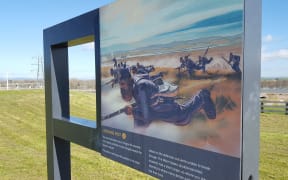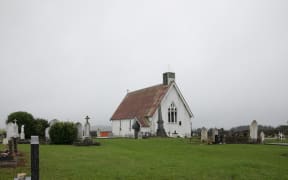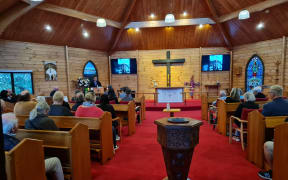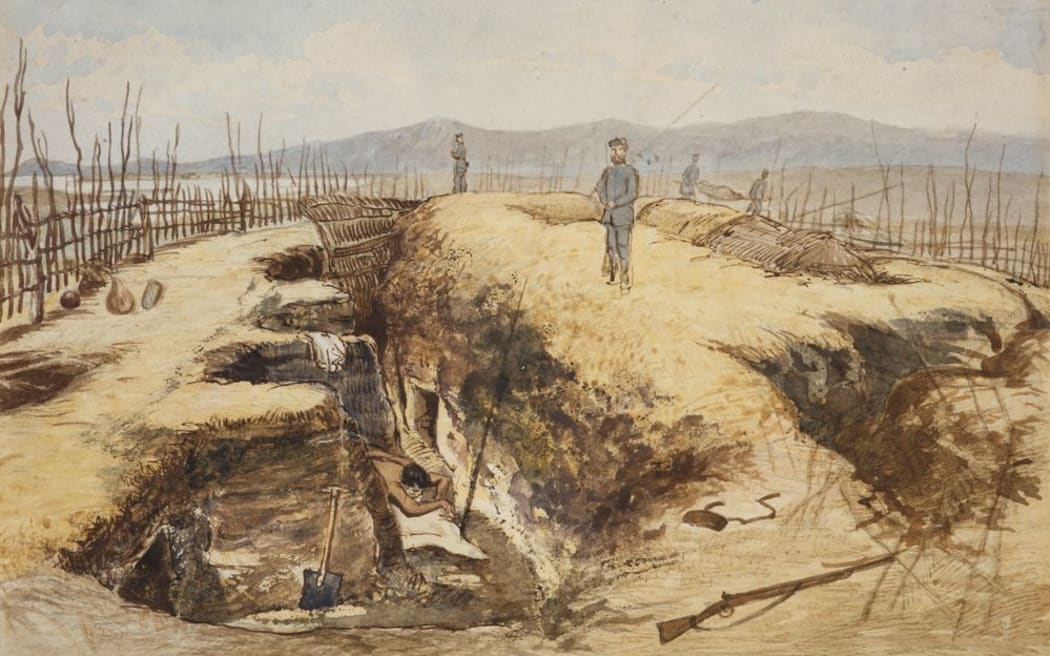
The focal point of this year's Te Pūtake o te Riri - the national commemoration of the New Zealand Wars - is Pukehinahina - the Tauranga site where the conflict known as The Battle of Gate Pā took place in 1864. Photo: Alexander Turnbull Library
Tauranga is hosting this year's Te Pūtake o te Riri - the national commemoration of the New Zealand Wars.
Community leader Charlie Rahiri told Māpuna last week that he was expecting about 2000 people to take part in events across the city in the lead-up to the annual observance of Rā Maumahara, the national day of commemoration for the New Zealand Wars, on 28 October.
A mass haka pōwhiri involving more than 500 warriors would kick off the events on Monday, with historical talks and tours of battle sites also on the cards over the next few days.
Rahiri said there was a desire in the community to learn the region's history, especially among young people.
He said the commemoration enabled Māori to tell their own stories - and in the long run it would create a stronger sense of nationhood.
"I do believe that as a nation we're on the precipice of change and things like Pūtake o te Riri, teaching our history in schools, contribute to us growing up and maturing as a nation, because our children will know the true history of this country and will understand each other a lot more."
The focal point of this year's commemorations was Pukehinahina - the site at the Greerton end of Tauranga where the conflict known as The Battle of Gate Pā took place between Māori and colonial troops 159 years ago, Rahiri said.
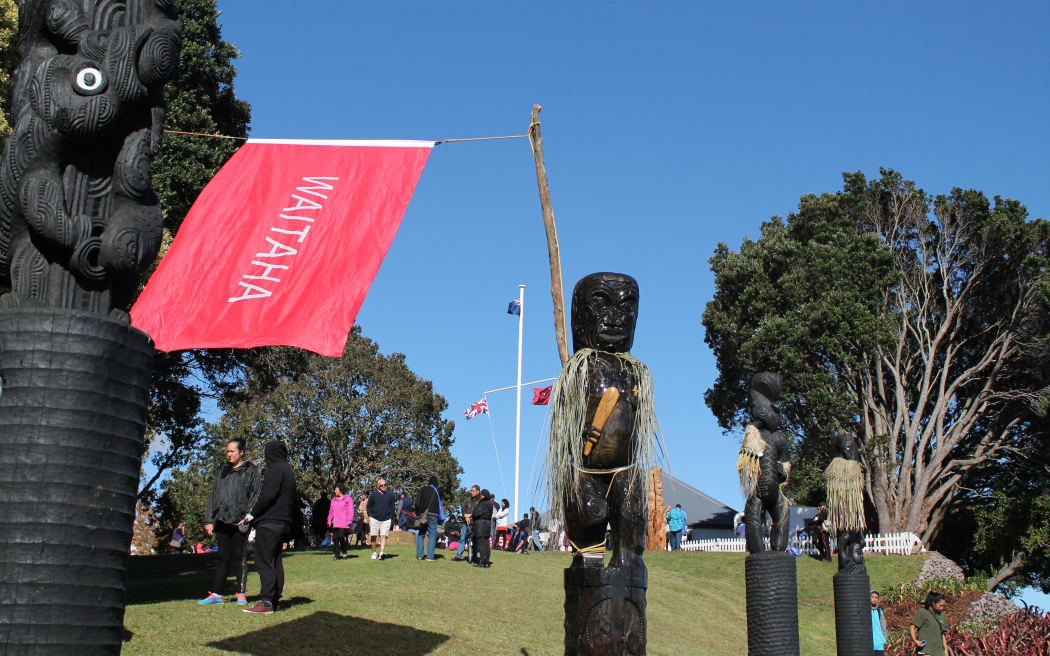
The Pou at the site of the Battle of Gate Pa, 2014. Photo: RNZ/Justine Murray
Despite vastly outnumbering the Māori defenders, the British forces suffered a heavy defeat in the 29 April 1864 battle - partly because the site had been designed with escape routes at either end, he said.
"It was a good vantage point, so at both ends there were gullies and areas where the warriors could escape."
Three of those who were "pivotal" in the construction and masterminding of the Pukehinahina defences - Rāwiri Puhirake, Pene Taka Tuaia, and Hakaraia from Waitaha - had previously learnt the art of trench warfare from Ngāpuhi chief Kawiti, Rahiri said.
"When the pā was constructed [they] designed it so that Māori would be underneath the pā, inside trenches and shooting up, and there were two escape routes on either side of the pā," he said.
"It was very strategic."
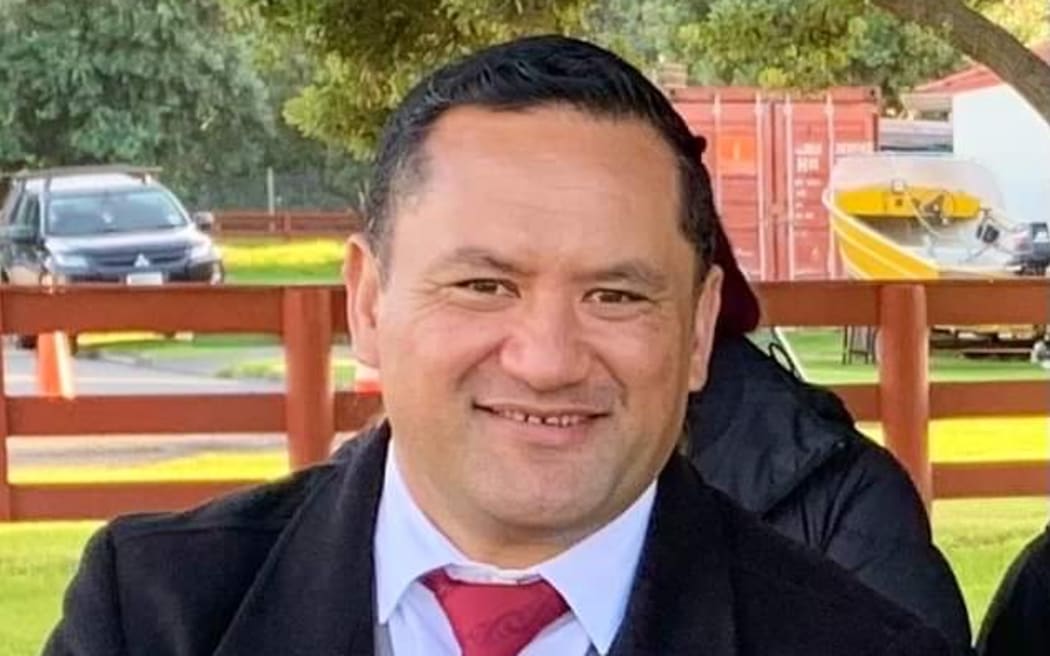
Tauranga community leader Charlie Rahiri says commemorations like Te Pūtake o te Riri enable Māori to tell their own stories. Photo: Mererina Murray
The battle lasted from about 8am until 4pm, when - observing no sign of life in the pā - General Cameron, the commander of the colonial forces, ordered the assault to proceed, Rahiri said.
They were "almost immediately" met with sharp fire from underneath.
"[The colonial forces] underestimated the people of Tauranga," Rahiri said.
"That one was a huge battle of minds, as much as it was the battle of guns and cannons."
Māori abided by the rules of engagement they had drafted in a letter to the British a month before The Battle of Gate Pā occurred, Rahiri said.
"As savage as it was, that war, and as brutal as it was, we still showed respect and reference in that battle," he said.
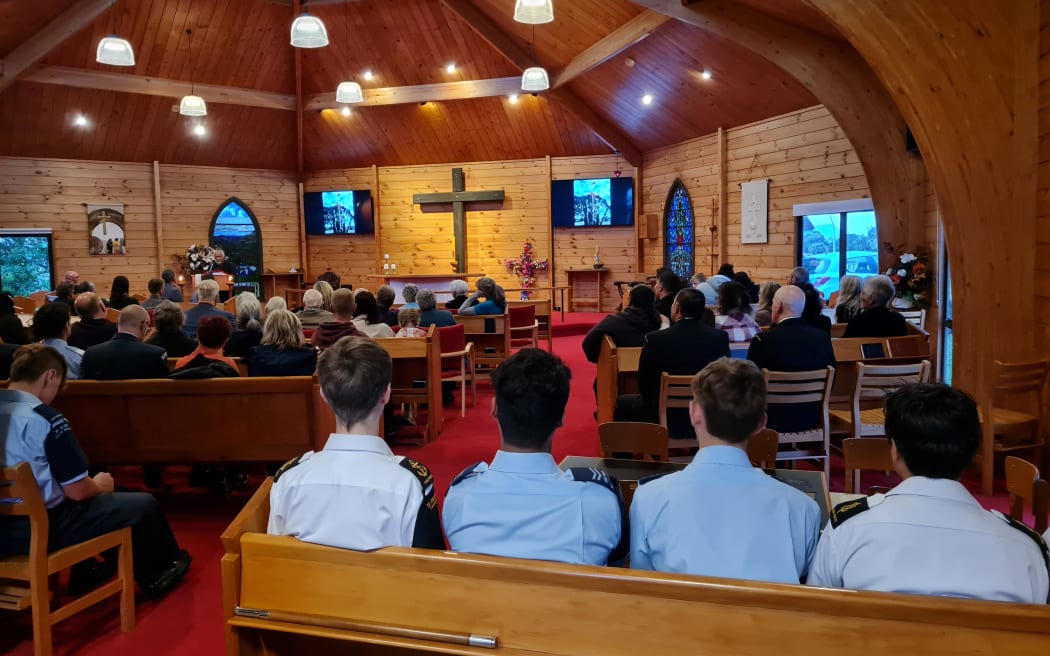
People attend an April 2023 service at St George's Anglican Church in Tauranga to commemorate the 159th anniversary of the battle of Gate Pā. Photo: RNZ/ Pokere Paewai
"The true measure of the Māori was the fact that they had these rules of engagement that meant that, at the end of the day, we had to look after one another - especially those who were who were wounded."
But that code of conduct was not reciprocated when the colonial forces marched on an unfinished pā at Te Ranga a couple of months later, he said.
"They marched on, unannounced, wiped everyone out, even women and children."
Events like Pūtake o te Riri were important to ensure these "hidden stories" which needed to be in the public eye and amplified, were, he said.
"Kaupapa like this resource us and enable us to be able to gather and tell our stories."
Rahiri said interest in the upcoming week's events had been huge and marae across Tauranga would be hosting many visitors.
"The desire for people to know more, to learn, is there."
